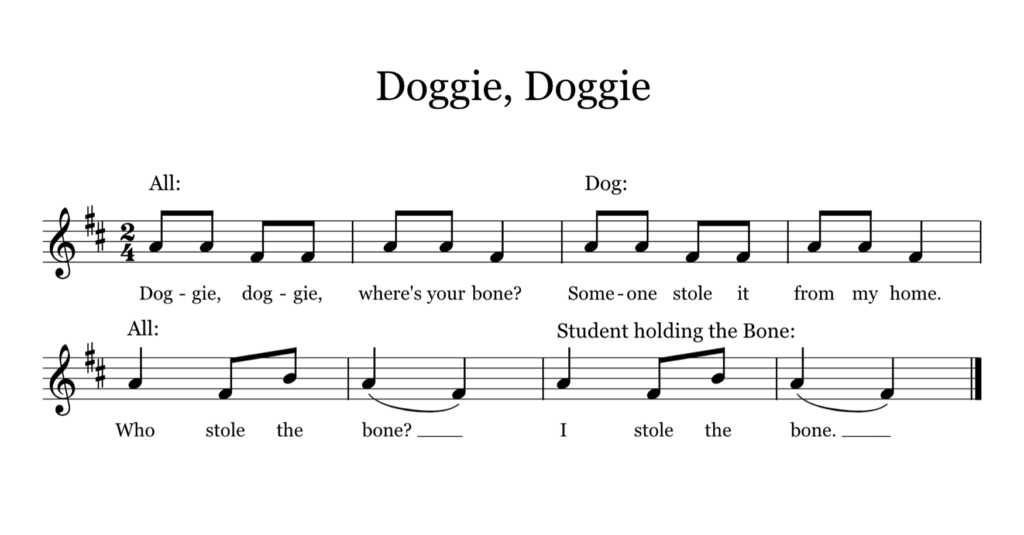Today I’m revisiting the lesson, Doggie, Doggie and looking at how it can be adapted as we continue to wear masks and social distance. I wrote about the song, Doggie, Doggie, years before the pandemic hit; you can read that original post HERE. Today, I’ll share ideas for using this song with barred instruments and how you can infuse simple improvisation into your lesson.

BARRED INSTRUMENTS
I’ve seen tons of ideas for how to quickly sanitize instruments; from covering them with plastic table cloths, to press n’ seal plastic food wrap, to shower caps, to shower curtains.
If you don’t have access to physical instruments, but your students have tables or laptops, you can use a virtual instrument. I love this one because it has a simple, clean design and it’s color-coded. However, there are many more available, which you can find by searching “virtual xylophone”.
LEARNING PITCHES
My idea for sequencing this lesson is as follows:
- If possible, take away the bars that students won’t be playing.
- Play a recording of the song several times through. Ask students to pat the rhythm as they listen. Have them play the rhythm in several different ways to keep interest, such as patting their heads, snapping their fingers, or using their chairs as drums.
- Have students listen to the song as they play the rhythm again, but this time, have them follow the same hand pattern as they would while playing their barred instrument. For example: Doggie (right hand), Doggie (left hand), etc.
- As students grow comfortable with alternating their hands while playing the rhythm, ask them to sing the song in their heads.
- Finally, transfer their rhythm pattern to the actual instrument or app.
PLAYING THE GAME WITH IMPROVISATION
Typically, students would play this game as a question and answer song, in which the “dog” and the student holding the bone would sing solos. In my adaption, the game would be played as follows:
- All students play (and sing in their heads) “Doggie, doggie, where’s your bone?”
- The solo student would then play the phrase “Someone stole it from my home.”
- All students play (and sing in their head) “Who stole the bone?”
- The solo student plays again, but this time they improvise four beats worth of music.
When I think of solos in the elementary music classroom, two thoughts come to mind; students who are introverts and Feierabend’s belief that any response is the right response. Being an introvert myself, I’m extra sensitive to the needs of these students. I know the type of safe and secure environment many need to feel confident with improvisation.
That’s why I like the idea of having the same student play both parts. The first time, when they play what’s written, serves as their warm-up. This is their comfort zone because they know what to do, and they’ve done it already with the rest of the class. If they end up repeating the phrase again during their improvisation period, so what? I too believe that any response is the right response, especially when we’re asking students to do something that would terrify most adults.
Another way to ease students into this lesson, is to allow students to volunteer to go first. This way, students who are extroverted will go first, giving students who are introverts a chance to see how everyone (including you) responds to each new improvisation. This is also why I think it’s important to give positive feedback every single time. You don’t necessarily have to respond to their improv, you could simply marvel at how well they alternated their hands, or how amazingly well they played their rhythms, or how they held their mallets beautifully. Look for the good in every performance, and share this with the rest of the class.
